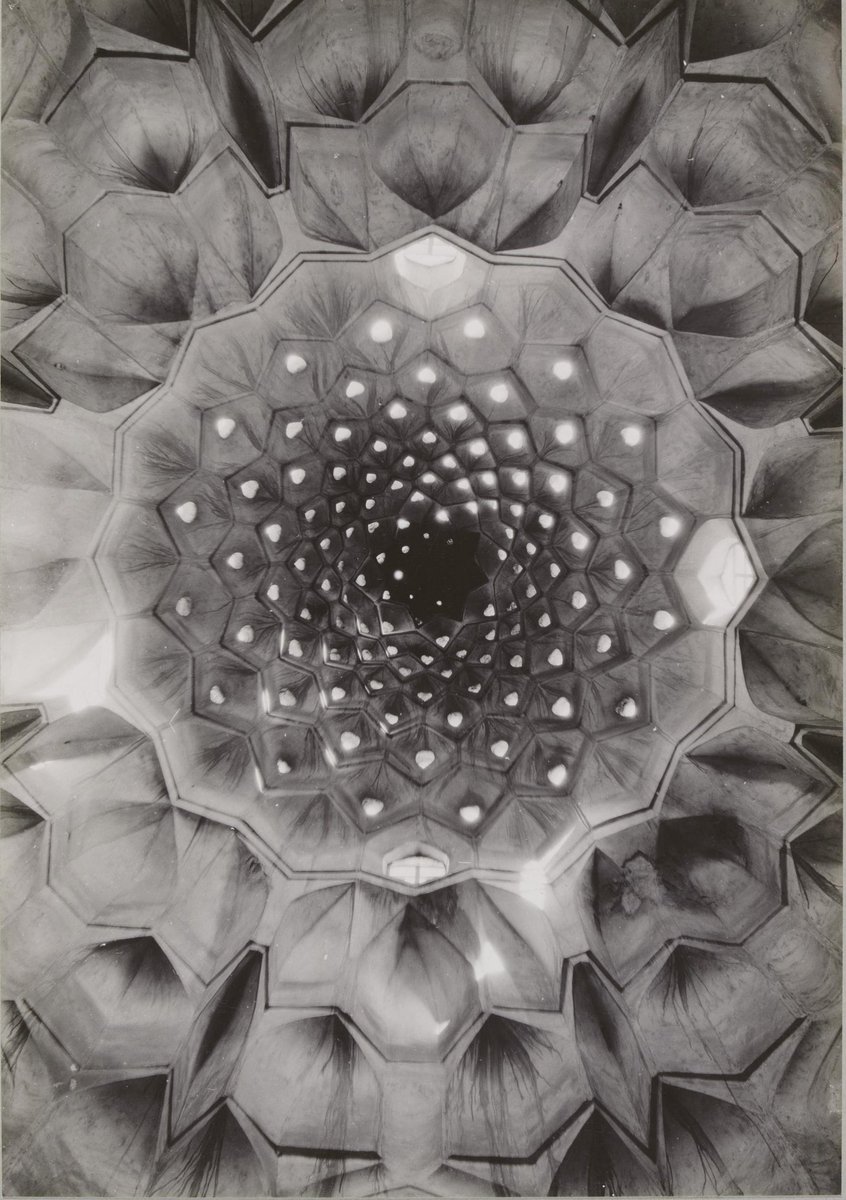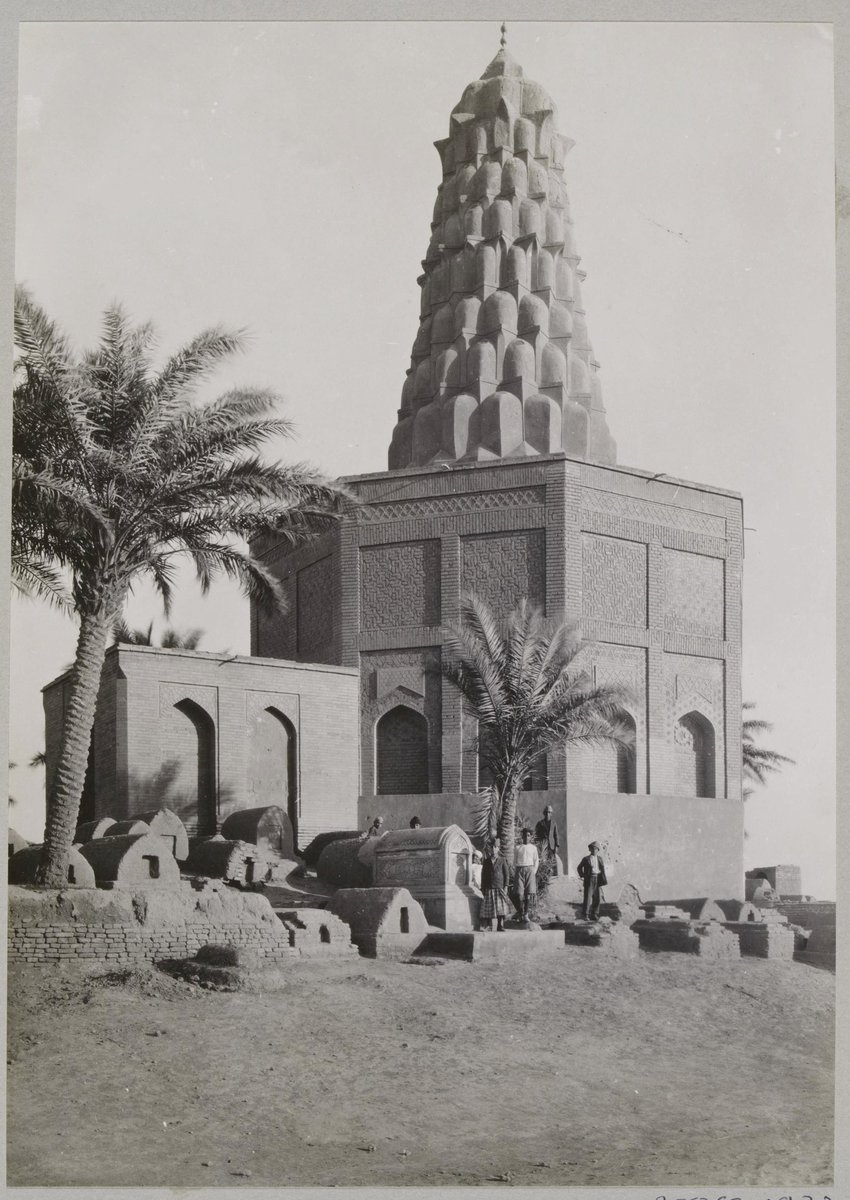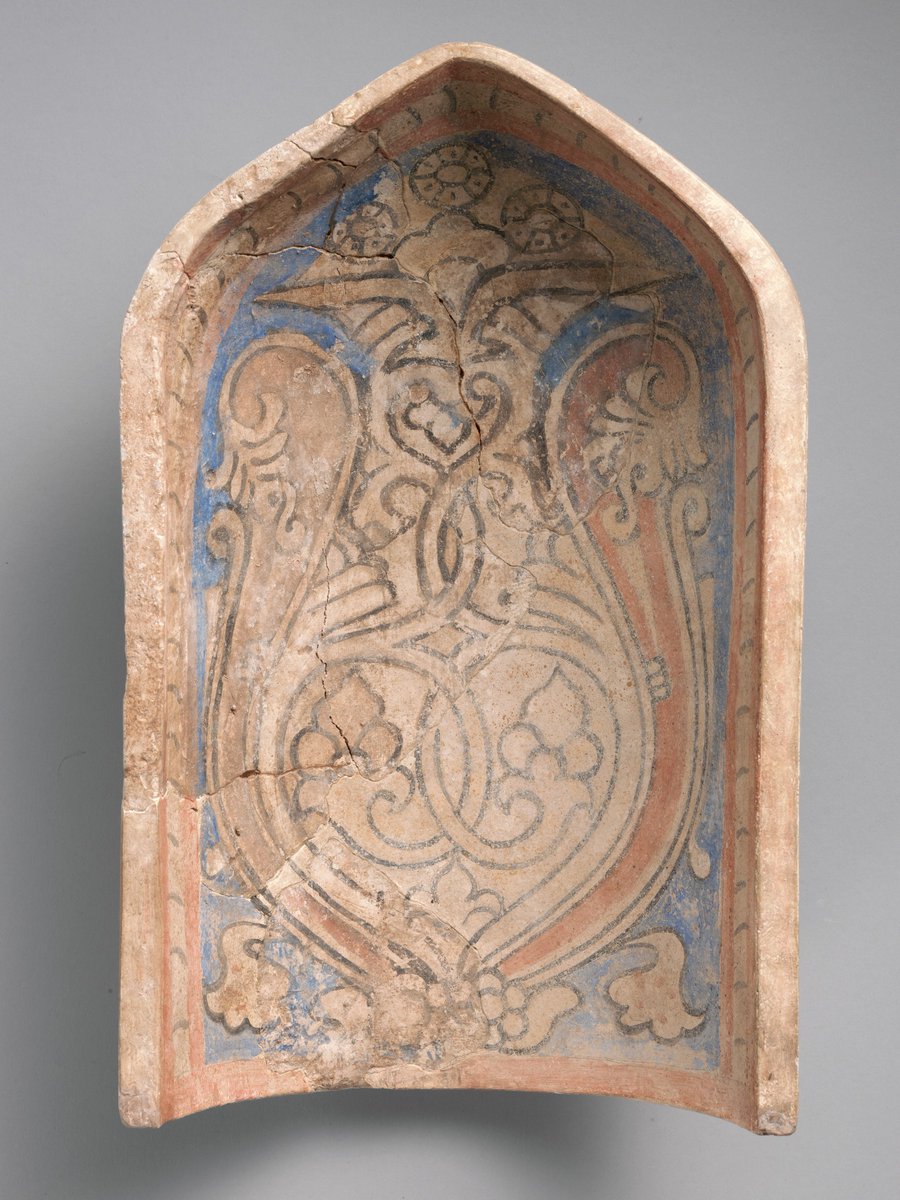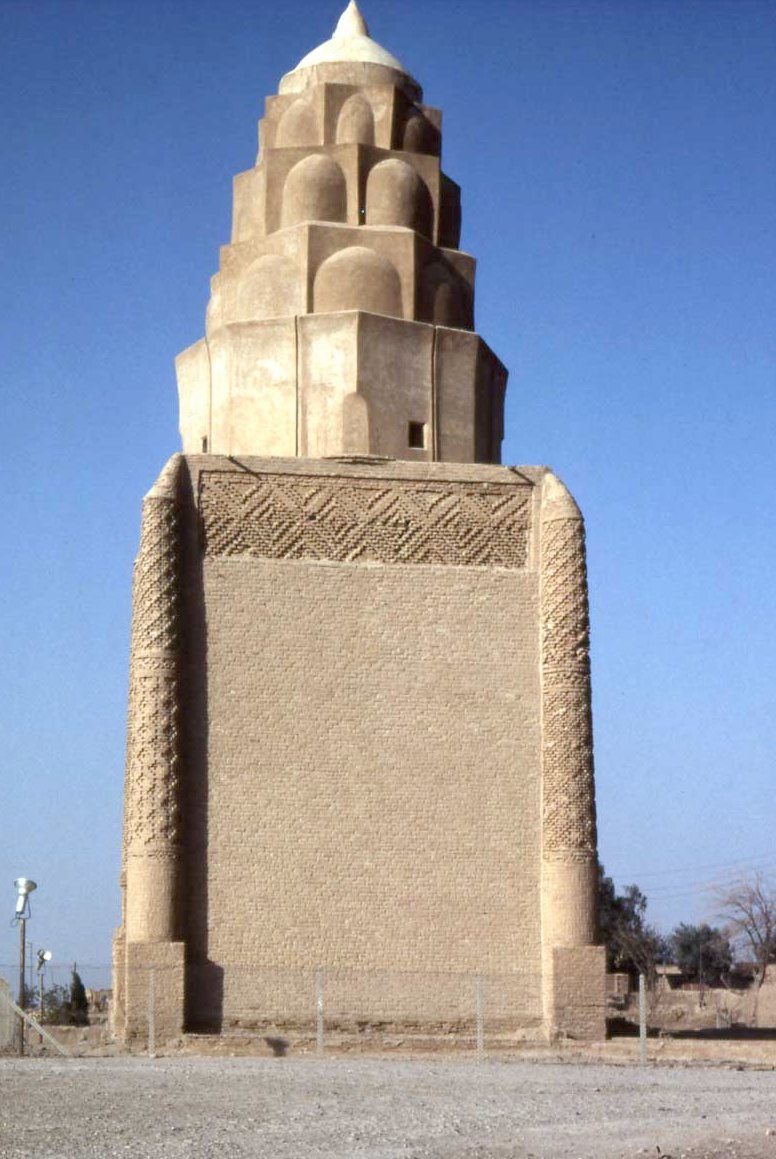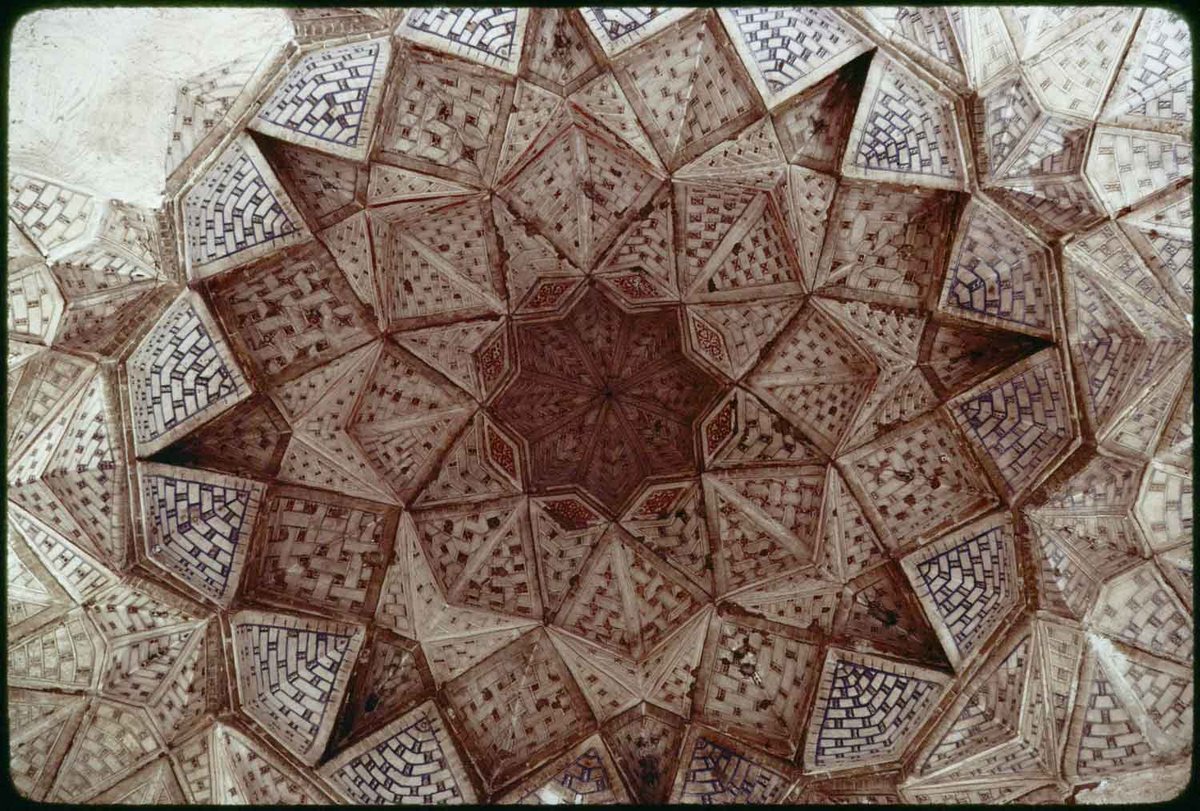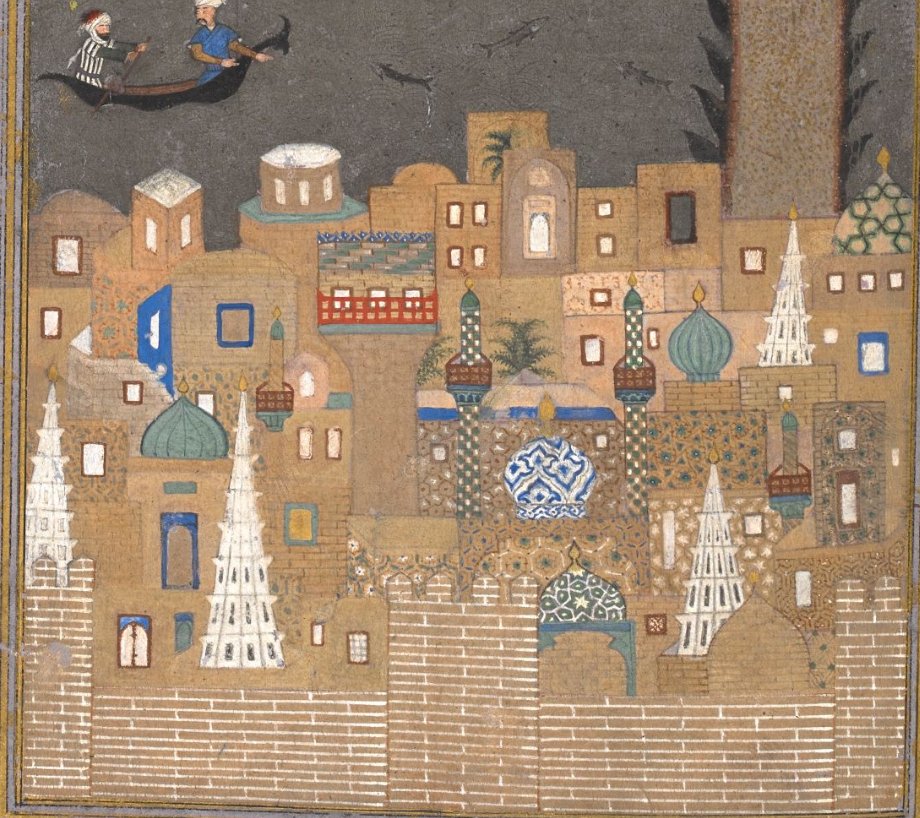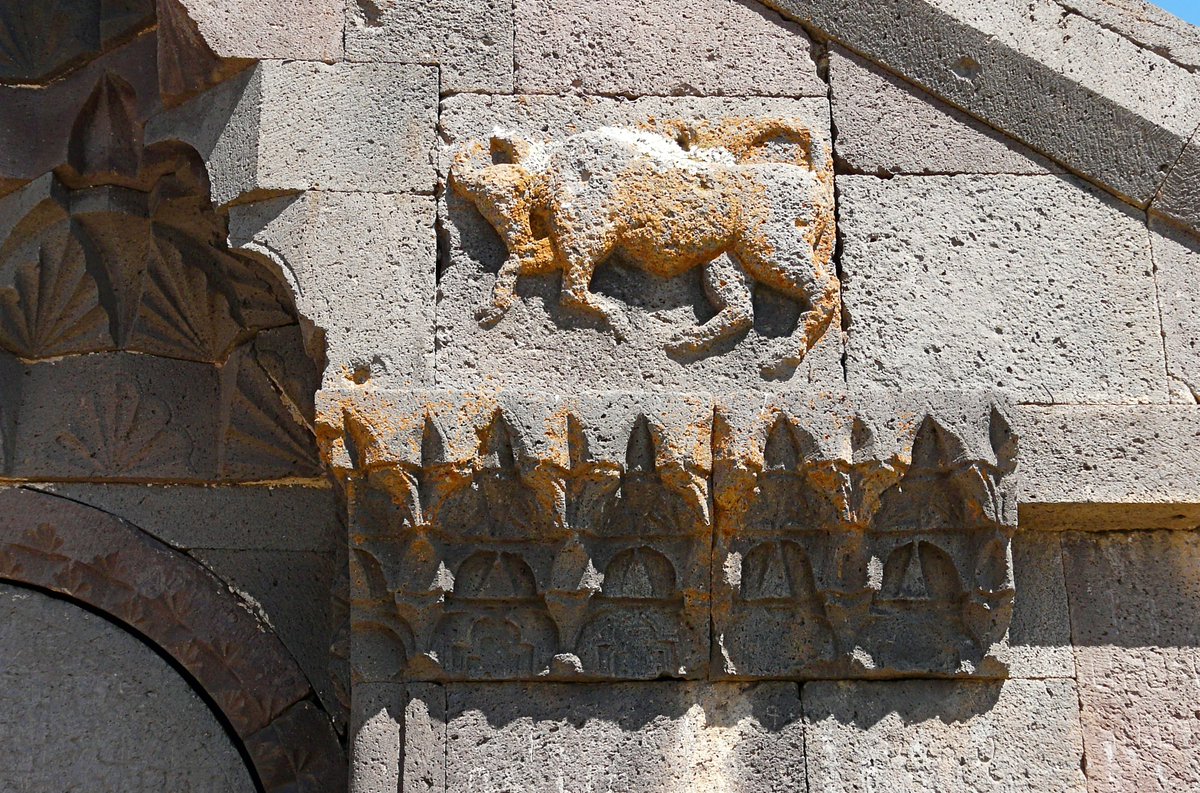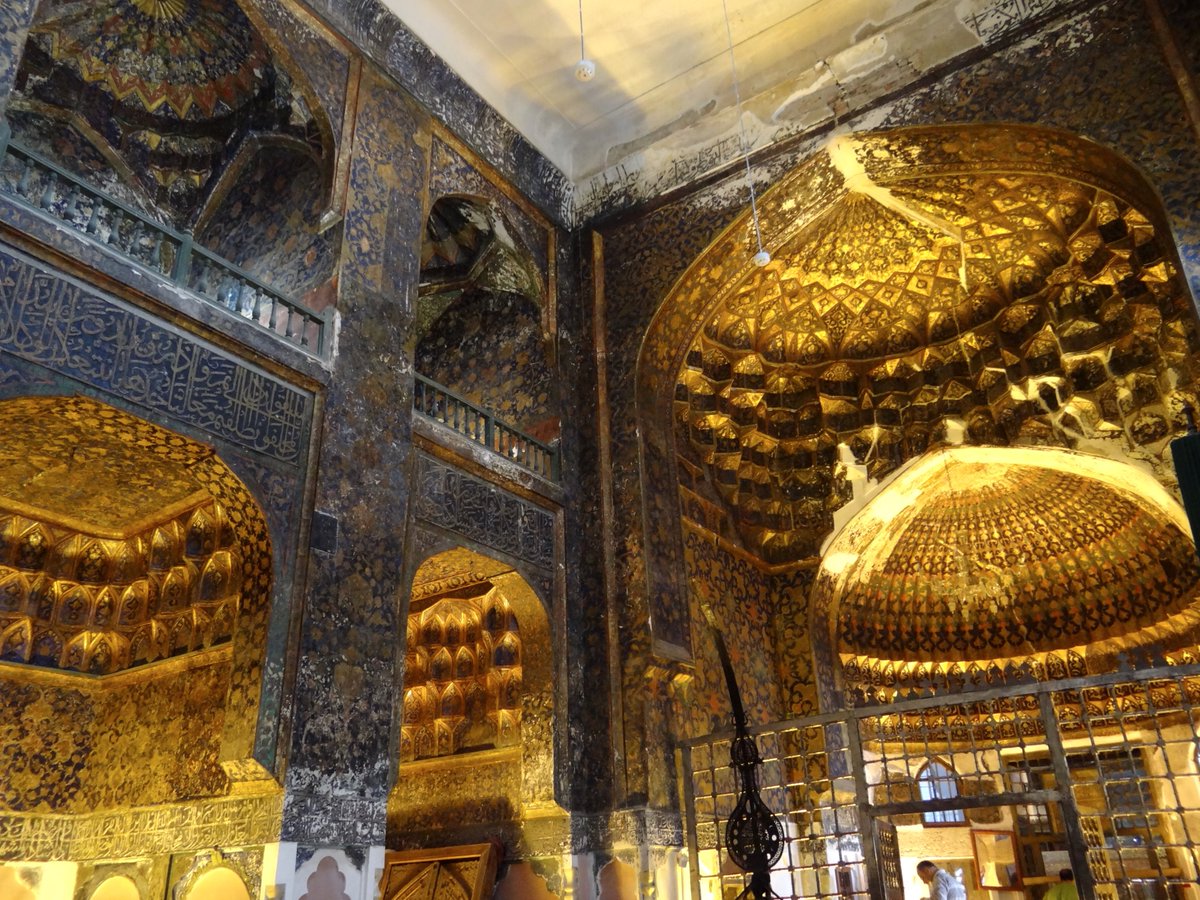Islamicate Architecture Tuesday returns with a look into one of the best known architectural and artistic components of the Islamicate world, muqarnas (a word of uncertain etymology), in its origin an exquisite elaboration on the squinch. I& #39;ll treat mostly early examples 1/9
The above image ((V&A2840-1930) is of the interior of the Turba Sitta Zubayda in Baghdad, built in 1193, showing the geometric intricacy and mesmerizing effect of the technique; here is the exterior view of the steeply rising muqarnas dome (V&A 2838-1930), both images c. 1925 2/9
The origins of muqarnas are not known precisely, but the technique probably originated in what is now Iraq and Iran. A set of elements excavated from 10th c. Nishapur, such as this one, probably were meant for inclusion in a muqarnas squinch (Met. 38.40.252) 3/9
The earliest (until recently) extant muqarnas dome was that of the shrine of Imam al-Dawr in Samarra, built c. 1085, the dome form becoming common in Iraq and neighboring lands for some centuries. Like so many other sites, the shrine was destroyed by ISIS in 2014. 4/9
The Imam al-Dawr muqarnas dome& #39;s interior was decorated with colored tile, as seen here from a photo c. 1978 (above and below, Yasser Tabbaa Archive, Aga Khan Documentation Center at MIT) 5/9
Such domes were once more common than today& #39;s survivals (or, rather, pre-2014 survivals) would indicate, as suggested by this 1468 view of Baghdad from a Turkmen illuminated manuscript of poetry (BL Add. MS 16561) 6/9
Muqarnas soon spread (and may have developed independently) all the way west to North Africa and to al-Andalus; it would become part of the architectural repertoire of Islamicate architects across Afro-Eurasia for centuries to come. 7/9
Two examples of further permutations will suffice us for now: first, muqarnas was not limited to explicitly Islamic structures. Here muqarnas is seen on the exterior of the Armenian-built Orbelian or Selim Caravanserai, built in 1332; photo by Rita Willaert via Flickr. 8/9

 Read on Twitter
Read on Twitter